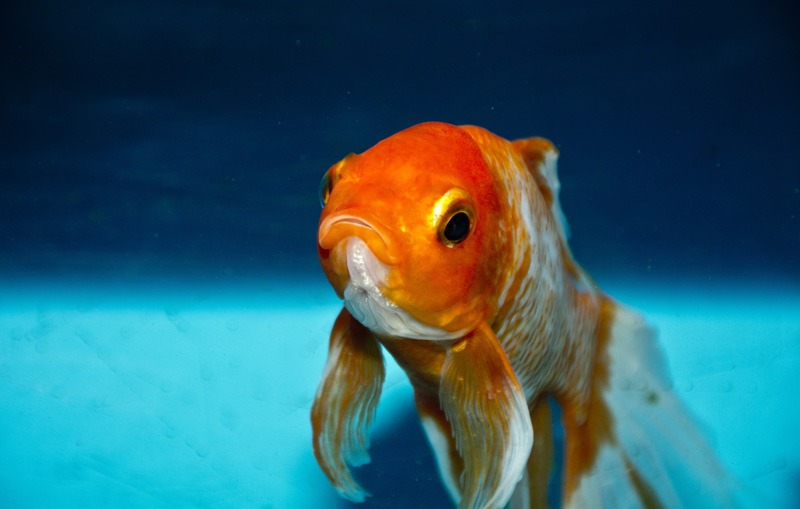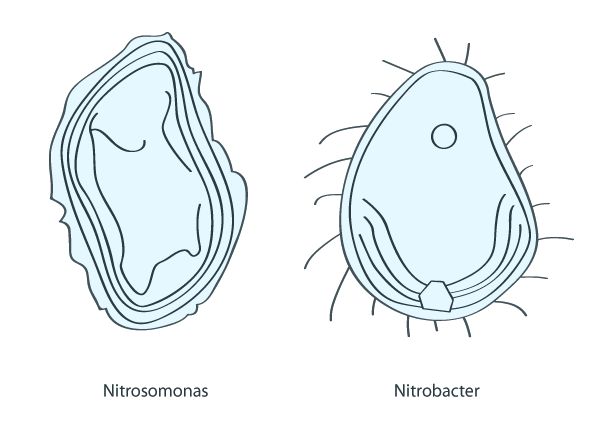There are many models of filter, but they all rely on the same principles. There are three types of filtration: mechanical, chemical and biological. Understanding what these do will help you choose the right filter, save money on expensive filter media, and keep your aquatic pets safe from new tank syndrome.
Mechanical filtration
Most filter models rely on some type of mechanical filtration. Mechanical filtration is the process of physically trapping debris that are floating in the water, so that you can remove it by hand. This is done by forcing the water through an absorbant, porous material such as a sponge, filter pad or floss. Any particles too big to fit through the pores will stick to the material, which will eventually clog and need to be rinsed out or replaced.
Materials will large pores will last longer without clogging, but will let many small particles through. We often refer to those materials as pre-filters, because they are typically used as the first step of any multi-step filtration system. By removing the largest chunks, it allows the rest of the system to do a better job without clogging right away.
Materials with small pores will trap fine particles, but this also means they will saturate easily and need to be replaced often. We tend to refer to these materials as water polishers, since they help to make the water look much clearer. These are typically used as the last step of any multi-step system.
Chemical filtration
This type of filtration relies the chemical properties of carbon or other materials with high affinity for the types of molecules that we want to remove from the water (ammonia, heavy metals, etc.) As water flows through the substance, those molecules bind to the carbon atoms (or whatever the chemically attractive substance is). Once saturated, the material needs to be replaced or recharged.
Because we often use carbon cartridges to filter our own drinking water, chemical filtration is what most people think about when they think of water filtration. You might be surprised to know that this type of filtration, while useful, is not actually essential in an aquarium. Unless you are trying to remove leftover medication from the water, or you are dealing with a major ammonia crisis, it’s perfectly fine to omit it.
In fact, chemical filtration can sometimes cause more harm than good. Some of the most commonly used substances, such as carbon, begin to leech harmful substances back into the water once it reaches its saturation point. For this reason, it absolutely must be changed once a month. If you’re as lazy as I am when it comes to filter maintenance, you’ll probably want to look into different options. Carbon use has also been linked to hole in the head disease (HITH, or head and lateral line erosion, HLLE) in certain species of fish.
Biological filtration
This type of filtration is absolutely essential to the survival of your aquatic pets. A healthy aquarium isn’t just a glass box filled with water — it’s a whole ecosystem, full of living organisms with important roles to play. The term “biological filtration” refers specifically to the most crucial of these organisms: two groups of bacteria that, together, process harmful nitrogenous waste into a much less toxic form. You can read more about this process here: Introduction to the Nitrogen Cycle (or, Why You Killed That Goldfish When You Were Little). For now, let me just say that without these little guys, we wouldn’t be able to keep aquatic pets alive in our homes. Hobbyists call these little magic helpers BBs (short for beneficial bacteria).
To be able to perform their important job, BBs need to make a cozy home for themselves inside your filter. They inhabit porous materials like sponges, bio-balls and ceramic rings. Collectively, we refer to these substances as bio media. The process of helping the BBs colonize their new homes is called cycling, and it is the most important thing you need to do before bringing any new aquatic animal home. You can read about proper cycling methods here: How to Cycle Your Aquarium.
Keep in mind that bio media should never be replaced. If it’s especially dirty, you can rinse it by swishing it around in a bucket filled with aquarium water. Never rinse your bio media under the tap, as BBs are sensitive to chlorine. Don’t squeeze the sponges, either!
If your filter only accepts disposable cartridges, make sure to always leave an old cartridge behind the newer one to give the bacteria a chance to migrate (or better yet, get a better filter!)


